Journal of Neurology, Neurological Science and Disorders
Use of a Zorb Bumper Ball in rehabilitation of a patient with ataxic multiple sclerosis: A case report
Randy Karim1*, Catherine Holt2 and Matthew Sutliff3
2Doctor of Physical Therapy Program, Cleveland State University, USA
3Cleveland Clinic Rehabilitation and Sports Therapy, Mellen Center for Multiple Sclerosis, USA
Cite this as
Karim R, Holt C, Sutliff M (2019) Use of a Zorb Bumper Ball in rehabilitation of a patient with ataxic multiple sclerosis: A case report. J Neurol Neurol Sci Disord 5(1): 057-061. DOI: 10.17352/jnnsd.000035Multiple sclerosis affecting the cerebellum and associated pathways can result in debilitating ataxia. Recent research has shown that reinforcement and goal-based learning may be more effective in improving motor outcomes than error-based motor learning in patients with cerebellar deficits due to decreased intrinsic feedback mechanisms. The case patient initially presented with debilitating ataxia and required a weighted bariatric rollator and Contact Guard Assistance (CGA) for all ambulation. He showed minimal improvement after completing traditional physical therapy which involved compensatory treatment strategies. The patient’s rehabilitation goal was to ambulate without an assistive device. After one year of physical therapy treatment, an inflatable Zorb Bumper Ball was purchased for trial use during therapy sessions as a low-cost, versatile alternative to harnessed gait training. The rationale for this novel intervention was to promote maximization of reinforcement learning during balance and gait training, increased patient engagement, and reduced risk of injury during ambulation without upper extremity support. After four sessions (60 minutes per week for four weeks) of utilizing the Zorb Bumper Ball in physical therapy, the patient was able to transition to performing functional outcome measures (25 Foot Walk Test (25FWT), Timed Up and Go (TUG), and 5 Times Sit to Stand (5×STS)) and overground ambulation without an assistive device for the first time in 3 years. During the year following treatment with the Zorb Bumper Ball, average times for the 25FWT, TUG, and 5×STS were not statistically different with and without an assistive device, however, the patient was able to reach his goal of independent ambulation without an assistive device. A Zorb Bumper Ball may be a safe, affordable, and portable means of training unassisted gait in patients with cerebellar ataxia.
Introduction
Multiple Sclerosis (MS) is an inflammatory disease of the Central Nervous System (CNS) resulting in axonal demyelination and significant functional impairment based on lesion location, with dissemination in both space and time required for conclusive diagnosis [1]. Although no cure for MS currently exists and understanding of the disease etiology and pathophysiology is limited, great strides have been made in the past decade toward better disease management and treatment both to decrease relapse rate and to improve patient function and participation. Since Petajan, et al., first demonstrated the benefits of exercise for patients with MS in 1996 [2], subsequent studies have shown improved exercise capacity, quality of life, fatigue levels and depression with regular physical activity and exercise interventions [3,4]. Halabchi, et al., concluded in 2017 that exercise training does not trigger MS exacerbation or relapse, and is a safe and effective intervention for limiting deconditioning and optimizing level of activity and function [5]. Beyond safety, some evidence even points to a possible disease-modifying potential of exercise, an exciting prospect that warrants further research and exploration [6].
Despite widespread evidence demonstrating exercise to be a crucial piece in the management of MS, presentation-specific activity prescription continues to be an area of development. Ataxia is a common and debilitating impairment in individuals with infratentorial lesions, affecting an estimated 80% of those diagnosed with MS [7]. Ataxia presents a unique challenge for exercise prescription, due to difficulty with intentional movement and high fall risk commonly demonstrated by such patients. In 2014, Keller and Bastian found statistically significant walking improvements in people with cerebellar ataxia following a balance home exercise program but specified that the program must present a significant balance challenge [8]. Salci, et al., investigated several ataxia exercise protocols in 2017 and found that balance training alone is not sufficient for successful rehabilitation, and is best accompanied by a combination of lumbar stabilization exercises and task-oriented training [9].
In light of the above recommendations and challenges regarding exercise training for ataxic MS patients, the purpose of this case study is to document the implementation of a novel treatment intervention utilizing a 1.5m Zorb TPU Bumper Ball to improve functional gait independence in a patient with severe ataxia.
Case Description
The case patient is a 26-year-old male diagnosed with relapsing-remitting multiple sclerosis at the age of 22 following symptom onset of unsteadiness, double vision, and dizziness. Initial MRI imaging showed extensive paraventricular, juxtacortical, and infratentorial demyelinating lesions. During the year following diagnosis, the patient suffered a brainstem relapse with multiple posterior fossa lesions affecting the cerebellum and cerebellar input pathways. The patient began outpatient physical therapy treatment at the Cleveland Clinic Mellen Center approximately two months after his diagnosis. At the time of physical therapy examination, he presented with severe trunk, neck and limb ataxia with decreased safety awareness, Holmes tremor, dysarthria, and gaze evoked nystagmus.
Intervention
Initial strategies to manage trunk and limb ataxia during gait and balance training included Balance-Based Torso-Weighting (BBTW) using counterweights of less than 1 pound [10], a transition to a heavily weighted vest of up to 30 pounds, distal extremity weighting, core stabilization exercise, gait and balance training, and Kinesiology taping. An Invacare bariatric rollator walker was issued to the patient, and additional cuff weights were added to the frame for increased stability and resistance to ataxic path deviations. These interventions had modest success in reducing the patient’s tremors, but balance and gait training continued to be limited in intensity due to the patient’s ataxia, decreased safety awareness, and high fall risk.
One year after ambulating with the bariatric rollator walker, the patient stated that his main goal was to return to ambulation without an assistive device. The primary physical therapist determined that this goal was unsafe due to the patient’s high risk for falls. However, the patient insisted that he intended to practice gait training without an assistive device, in spite of any therapist recommendations. Utilizing the three components of Evidence-Based Practice (EBP) (clinical expertise, patient values and best available research [11]), a decision was reached to purchase an inflatable Zorb Bumper Ball (Figure 1) for utilization during physical therapy sessions. The Zorb Bumper Ball is a spherical ring made of 0.8mm non-toxic, odorless PVC and was originally developed for recreational use (further specifications found in Table 1). The user wears the ball via two shoulder straps inside the cylindrical opening and grasps two handles for upper extremity and trunk stabilization. Once in place, the ball extends from below the user’s hips to above their head, allowing them to move or even fall in any direction with minimal risk of injury (Figure 1, Table 1).
The case patient was seen for a total of 22 sessions before the ball was purchased and 33 sessions after ball purchase, with the ball utilized in 15 of those sessions. Knee protection pads (Impacto® The Original Knee Pad) were worn during ball use to decrease risk of injury with knee buckling, and a cooling vest (Polar Products® Adjustable Zipper Cooling Vest) was worn as needed between exercise bouts to manage effects of heat intolerance. Interventions focused on gait and balance training (Table 2). The patient was able to tolerate an average of approximately 5 consecutive minutes of wear time before requiring a seated break with cooling strategies as needed, with 30-40 minutes of total wear time during sessions when the ball was utilized. Ball sessions were completed in both indoor and shaded outdoor settings for surface variability and task-specific training Table 2.
Results
The patient completed four visits of physical therapy, at a frequency of once per week, using with the Zorb ball as an intervention. After completion of the four visits, the patient was able to complete all of the functional outcome measures without an assistive device with CGA. This was the first time he was able to complete outcome measures without an assistive device since initiating physical therapy treatment three years prior. Data for the 25 Foot Walk Test (25FWT), Timed Up and Go (TUG), and 5 Times Sit to Stand (5×STS) are available for the year prior to and following treatment using the Zorb Bumper Ball, these three measures have been chosen for statistical outcome analysis. Averages and standard deviations of each measure for the year before and after initiation of Zorb Bumper Ball usage in therapy can be found in Table 3.
For the 25FWT, a two-sample t-Test assuming equal variances revealed no statistical difference (p=0.13) between performance with a Rollator prior to Zorb Bumper Ball use and performance without an assistive device over the year following Zorb Bumper Ball use. Similar results were found in assessing TUG (p=0.60) and 5×STS (p=0.06), with no statistically significant difference (p=0.60) after the patient stopped utilizing his rollator during the test. There were no adverse effects while using the Zorb Bumper Ball during physical therapy treatment (Table 3,4) (Figure 2(a-c)).
Discussion
This case report highlights the use of a Zorb Bumper Ball as a safe and feasible physical therapy treatment option in an individual with MS and ataxia. Ataxia is one of the most debilitating symptoms of neurological disease in patients with multiple sclerosis, affecting every area of functional mobility and participation. Compensatory management strategies have been shown to be effective in many cases but can be cumbersome and undesirable to patients who have set independence as a goal. Recent evidence suggests a focus on task-specific training for individuals with cerebellar dysfunction in contrast to traditional compensatory therapy [12,13]. However, the current options for achieving task specificity have largely been limited to relatively expensive harness systems in order to maintain patient safety. The Zorb Bumper Ball provides a low-cost, versatile alternative that frees the patient and therapist to explore environments and surfaces outside of the clinic while increasing training intensity, tailoring sessions to patient goals and interests, and allowing for safe exploration of limits of support and fall recovery. The Zorb Bumper Ball may also be a more feasible option for translation into practice in the home or outdoor environments, when compared to overhead safety harness systems.
From a motor learning standpoint, the Zorb Bumper Ball allows for clinically relevant application of multiple evidence-based theories to maximize patient outcomes. Therrien, et al., investigated motor learning in patients with cerebellar damage and found that damage to intrinsic feedback pathways may diminish the effectiveness of pure error-based training [15]. In contrast, reinforcement learning places a goal, rather than error, at the focal point of training and provides simple success-or-failure outcome options [14,15]. In this training technique, learning happens as the patient explores actions that will lead to success. For the case patient, the Zorb Bumper Ball provided a safe means to explore the environment and focus on the goal of staying upright, while also challenging the patient to respond to and learn from movement errors. Kelly and Shanley argue from a neurophysiological and theoretical framework that patients with cerebellar deficits require increased repetition and gait training intensity due to difficulties consolidating movement skills [16]. The Zorb Bumper Ball allowed for increased intensity of gait and balance exercise both by eliminating upper extremity support and by creating an environment of “safe falls” where the patient could be challenged to their limits of stability without a harness. This novel treatment may have contributed to increased patient confidence and safety with ambulation without an assistive device, as evidenced by maintenance of gait speed, TUG time predicting fall risk, and improvement in functional lower extremity strength as shown on the 5×STS. It also greatly increased patient engagement due to his involvement in choosing the equipment and his enjoyment of the treatment sessions (Figure 3).
Precautions for utilizing the Zorb Bumper Ball with other patients include vertigo, claustrophobia, history of knee dysfunction, and heat intolerance. Several limitations impact the application of this case study data. The Zorb Bumper ball was only utilized in 45% of physical therapy sessions in the novel treatment time frame that was analyzed, due to setting limitations, patient preference, and clinical variability. Consistent outcomes data for the 2-year time frame studied was only available for three standardized measures focusing on gait. Retrospective data was inconsistent for measures of static and dynamic balance (Berg Balance Scale, Dynamic Gait Index) and endurance (6 Minute Walk Test).
Summary
Further research is warranted to investigate the implementation of a Zorb Bumper Ball into physical therapy as an effective treatment option for patients with ataxia in comparison to other intervention strategies, devices, and modalities.
- Thompson AJ, Banwell BL, Barkhof F, Carroll WM, Coetzee T, et al. (2018) Diagnosis of multiple sclerosis: 2017 revisions of the McDonald criteria. Lancet Neurol 17: 162-173. Link: http://bit.ly/2M7qOgQ
- Petajan JH, Gappmaier E, White AT, Spencer MK, Mino L, et al. (1996) Impact of aerobic training on fitness and quality of life in multiple sclerosis. Ann Neurol 39: 432-441. Link: http://bit.ly/34CpSr9
- McCullagh R, Fitzgerald AP, Murphy RP, Cooke G (2008) Long-term benefits of exercising on quality of life and fatigue in multiple sclerosis patients with mild disability: a pilot study. Clin Rehabil 22: 206-214. Link: http://bit.ly/2Z1cmfk
- Stroud NM, Minahan CL (2009) The impact of regular physical activity on fatigue, depression and quality of life in persons with multiple sclerosis. Health Qual Life Outcomes 7: 68. Link: http://bit.ly/2s3dtix
- Halabchi F, Alizadeh Z, Sahraian MA, Abolhasani M (2017) Exercise prescription for patients with multiple sclerosis; potential benefits and practical recommendations. BMC Neurol 17: 185. Link: http://bit.ly/2r6dQIK
- Dalgas U, Stenager E (2012) Exercise and disease progression in multiple sclerosis: can exercise slow down the progression of multiple sclerosis? Ther Adv Neurol Disord 5: 81-95. Link: http://bit.ly/34DXXqC
- Wilkins A (2017) Cerebellar dysfunction in multiple sclerosis. Front Neurol 8: 312. Link: http://bit.ly/2EuMPSo
- Keller JL, Bastian AJ (2014) A home exercise program improves walking in people with cerebellar ataxia. Neurorehabil Neur Repair 28: 770-778. Link: http://bit.ly/2PZnDZt
- Salci Y, Fil A, Armutlu K, Yildiz FG, Kurne A, et al. (2017) Effects of different exercise modalities on ataxia in multiple sclerosis patients: a randomized controlled study. Disabil Rehabil 39: 2626-2632. Link: http://bit.ly/35I7WwI
- Gibson-Horn C (2008) Balance-Based Torso-Weighting in a Patient with Ataxia and Multiple Sclerosis: A Case Report. Jour Neuro Phys Ther 32: 139-146. Link: http://bit.ly/2s4hT8O
- Cleland JA, Noteboom JT, Whitman JM, Allison SC (2008) A primer on selected aspects of evidence-based practice relating to questions of treatment. J Orthop Sports Phys Ther. 38: 476-484. Link: http://bit.ly/34B5g2r
- Cernak K, Stevens V, Price R, Shumway-Cook A (2008) Locomotor training using body-weight support on a treadmill in conjunction with ongoing physical therapy in a child with severe cerebellar ataxia. Phys Ther 88: 1-10. Link: http://bit.ly/2EDuUsB
- Vaz DV, Schettino Rde C, Rolla De Castro TR, Teixeira VR, Cavalcanti Furtado SR, et al. (2008) Treadmill training for ataxic patients: A single-subject experimental design. Clin Rehabil 22: 234-241. Link: http://bit.ly/34zG7Fs
- Tseng YW, Diedrichsen J, Krakauer JW, Shadmehr R, Bastian AJ (2007) Sensory prediction errors drive cerebellum-dependent adaptation of reaching. Jour Neurophysiol 98: 54-62. Link: http://bit.ly/2PViFgs
- Therrien AS, Wolpert DM, Bastian AJ (2016) Effective reinforcement learning following cerebellar damage requires a balance between exploration and motor noise. Brain 139: 101-114. Link: http://bit.ly/38UBA3y
- Kelly G, Shanley J (2016) Rehabilitation of ataxic gait following cerebellar lesions: Applying theory to practice. Physiother Theory Pract 32: 430-437. Link: http://bit.ly/2Sao45Z
Article Alerts
Subscribe to our articles alerts and stay tuned.
 This work is licensed under a Creative Commons Attribution 4.0 International License.
This work is licensed under a Creative Commons Attribution 4.0 International License.
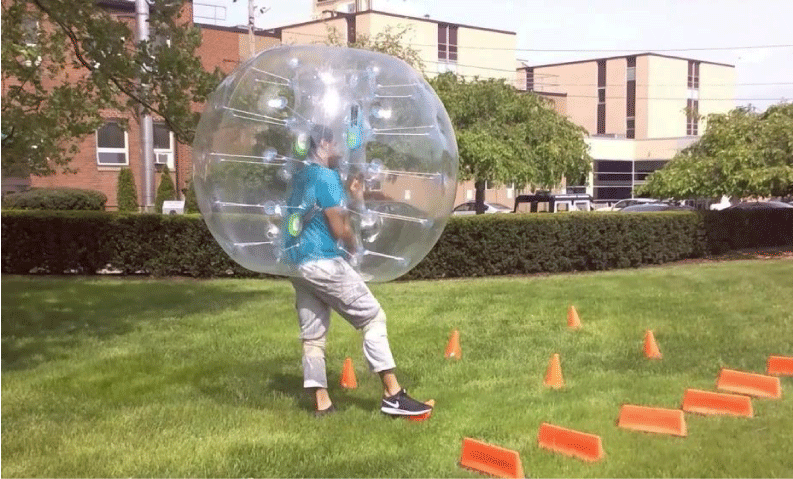
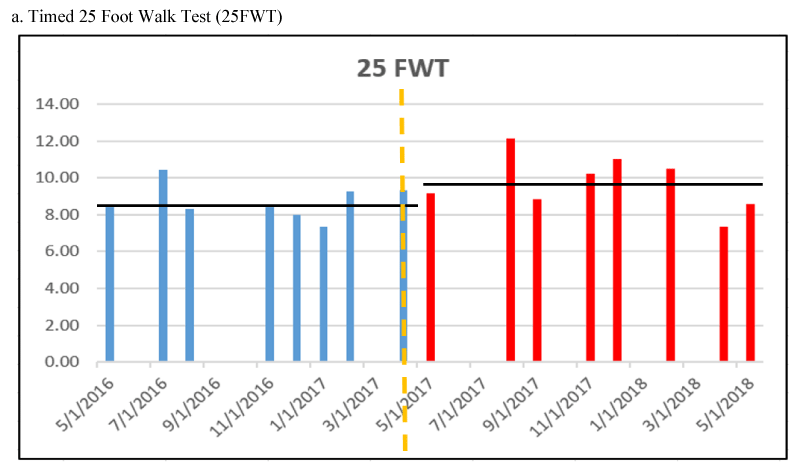
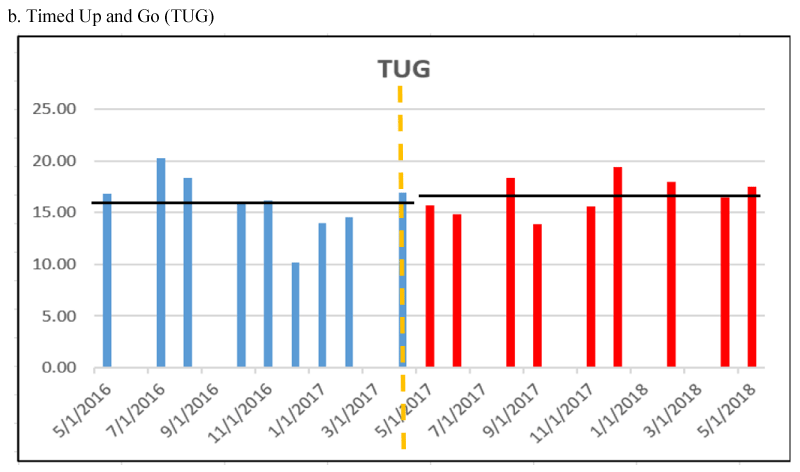
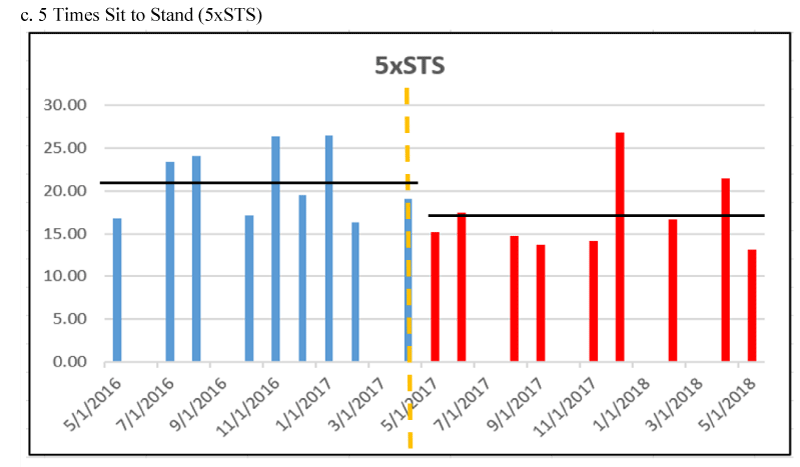
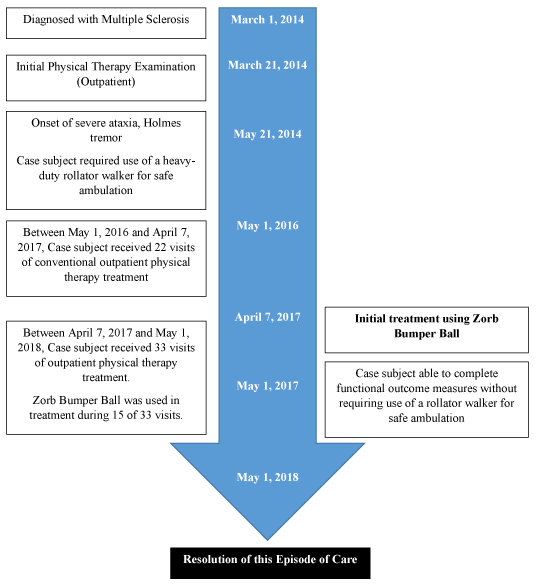

 Save to Mendeley
Save to Mendeley
